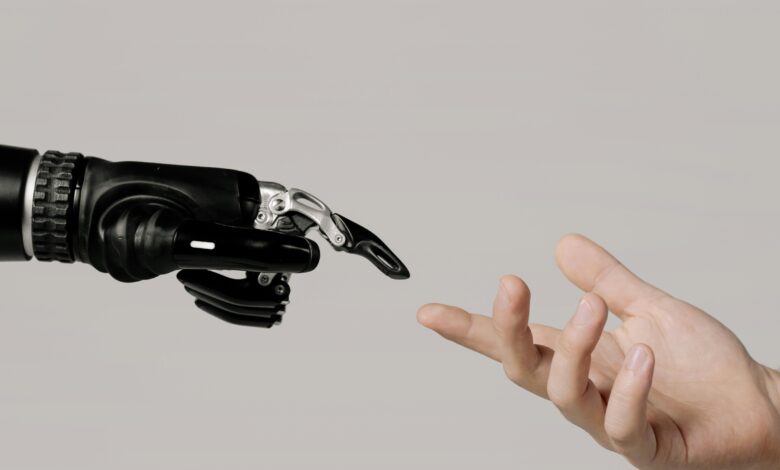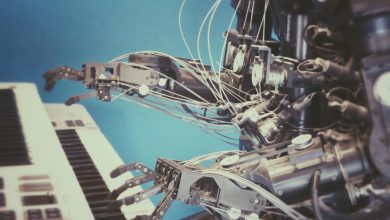
In recent years, the Lindy Effect has made a significant impression on me. The principle suggests that the longer something has existed, the longer it is likely to persist. It’s why, despite the rise of digital technology, we still rely on books over Kindles, LPs over Spotify, and continue to use the QWERTY keyboard layout. One category where this effect holds true is advice: the older the advice, the longer it tends to last.
A good example is Peter Drucker’s The Effective Executive, a timeless book that I recently revisited. One key takeaway was Drucker’s perspective on computers. He suggested that while computers excel at logical tasks, humans are inherently perceptual, not logical. This aligns with Moravec’s Paradox, which states that machines and humans often have opposite strengths and weaknesses.
In the wake of ChatGPT and other AI advancements, we find ourselves at a critical juncture. While AI is celebrated for its vast opportunities, we must also consider the challenges it presents for human skills. AI might replace certain repetitive tasks, but it also creates an urgent need to emphasise and preserve the uniquely human traits that drive creativity, critical thinking, and decision-making.
The Importance of Emphasizing Human Strengths
Over 20 years ago, Frank Levy and Richard Murnane warned of the growing role of technology and suggested that we should double down on our human strengths – especially in complex communication and creative problem-solving. These qualities enable us to tackle “truly exceptional problems” and persuade others effectively. However, today, there’s a risk that we may be outsourcing critical thinking to AI.
Historically, we’ve outsourced various cognitive functions to technology. We relied on calculators to solve simple arithmetic and smartphones to store important dates and numbers. Such adaptations are necessary, but the concern with AI is more profound – it might lead us to forgo the very skills that make us human, such as critical thinking and creativity.
AI as a Tool, Not a Solution
AI is undeniably an excellent tool for automating repetitive tasks. As Elaine Rodrigo from Reckitt explained, AI can mine data for insights, optimise processes, and identify new opportunities. AI can support insight generation, but it can’t replace the strategic decisions and conversations that follow. However, many businesses are still treating AI as a one-stop solution for complex challenges.
Take the example of an agency that boasted about a new AI tool capable of testing 100 new pack designs in under a minute, assigning each a single score. While impressive, this raises a crucial question: Why would any design agency generate 100 pack designs at once? This is where the seduction of AI becomes dangerous. AI may provide quick answers, but such tools often reduce complex creative challenges to a one-number solution, overlooking crucial elements like brand identity, consumer expectations, and market context.
The Danger of Relying Too Heavily on AI
AI, by nature, is seductive. The promise of speed and efficiency is enticing, but in many cases, AI is reductive, oversimplifying the complexity of the problems it seeks to solve. Thin data, as coined by Tricia Wong, is one such outcome. For example, AI-driven tools may help optimize a pack design based on a single metric, but this approach can neglect the full spectrum of factors that make a design effective, like brand identity and consumer loyalty.
The true value of creative work, as seen with companies like Apple, Ferrari, and Rolex, comes from careful refinement, not brute-force iteration. These companies invest in visionary creativity and expertise, not just algorithms optimising for one number. AI should be seen as a tool to enhance human creativity, not a substitute for it.
The Critical Role of Communication
Effective communication is at the core of human leadership. Whether in business meetings, negotiations, or team collaborations, communication often hinges on emotional intelligence and the ability to navigate complex interpersonal dynamics. This is an area where AI often falters.
AI can provide outputs and even simulate conversations, but it lacks the nuanced understanding of human relationships – how to adapt to non-verbal cues or frame feedback in a way that motivates action. As Drucker observed, humans excel at adapting and inferring meaning from limited information. In contrast, AI’s logical nature makes it ill-suited to understanding the subtleties of human interaction.
Time and Collaboration in the Age of AI
In our increasingly time-poor world, AI can exacerbate the sense of isolation and disconnection. Tools like Microsoft Teams and remote working have made it difficult for teams to engage in meaningful face-to-face collaboration. However, presenting results through AI alone misses a vital element – the opportunity to come together as a team, exchange ideas, and reach a shared understanding.
The skill of presenting is to create a context in which others can think and engage with the material. When AI outputs are shared without the context of human interaction, we lose the chance for productive discussion and collaboration. This is why businesses that maintain opportunities for direct, human-driven communication thrive.
Three Challenges AI Presents for Businesses
As AI continues to shape the future, businesses face several challenges.
Challenge 1: Automation
AI has revolutionised the way we approach automation, but businesses must consider how they equip employees for the full scope of automation. It’s not just about adopting AI but ensuring teams are well-versed in utilising all forms of technology. The adoption of AI alone won’t guarantee success. Instead, businesses must ensure that employees are adept at using a wide range of tools to optimize productivity.
Challenge 2: Developing Human Skills
With the rise of AI, there is a growing concern about the juniorisation of decision-making, where lower-level employees are tasked with decisions previously made by more experienced leaders. Drucker predicted this shift, noting that as AI handles more computation, human workers must embrace roles of decision-making and strategic thinking.
However, AI can’t replace the need for emotional intelligence, leadership, or complex communication skills. These are the areas that should be nurtured alongside technological proficiency to ensure that employees are not reduced to “tool technicians.”
Challenge 3: Mental Health
AI might streamline work, but it also increases the risk of mental burnout. Automation and remote work, coupled with AI, can eliminate opportunities for mental rest, leaving employees to engage in high-stress, high-stakes tasks without downtime. Companies must prioritise mental health by fostering a culture that encourages time off, work-life balance, and the opportunity for employees to disconnect.
The Bottom Line: AI and Human Collaboration
AI is a powerful tool, but its potential is only fully realized when it is used in conjunction with human capabilities. Critical thinking, creativity, storytelling, and persuasion are uniquely human skills that AI cannot replicate. The businesses that thrive in the AI era will be those that invest in their employees’ human skills while embracing AI as a complementary tool to enhance, not replace, human judgment.
To succeed, companies must nurture both the technological and emotional intelligence of their teams, ensuring they can leverage AI’s strengths without sacrificing the human edge that drives innovation, leadership, and effective communication.




